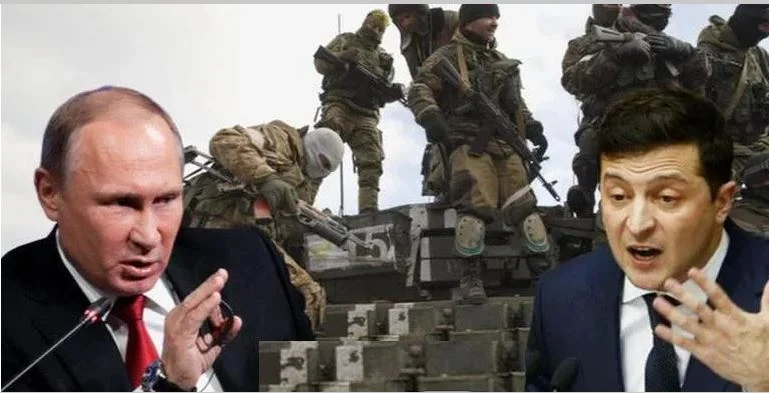NEWS
Ukraine launches offensive to reclaim Russian-occupied region

Ukrainian forces pressed their counter-offensive to retake the Russian-occupied southern region of Kherson, while a team of UN experts was en route to inspect the Zaporizhzhia nuclear plant which was targeted by fresh shelling over the weekend.
The coastal region of Kherson and its capital city of the same name have been contested by Russian troops since the war broke out six months ago.
“Ukrainian armed forces have launched their offensive in several areas in the south,” the head of the regional administration, Yaroslav Yanushevych, said on the Telegram app.
In his daily address Monday night, President Volodymyr Zelensky did not specifically mention the counter-offensive but said they would oust the occupying forces “to the border”.
“If they want to survive, it is time for the Russian military to flee. Go home,” he said.
Russian forces seized Kherson, a town of 280,000 inhabitants, on March 3.
It was the first major city to fall following Moscow’s invasion of Ukraine on February 24.
“Today there was a powerful artillery attack on enemy positions in… the occupied Kherson region,” local government official Sergey Khlan told Ukraine’s Pryamyi TV channel.
“This is what we have been waiting for since the spring — it is the beginning of the de-occupation of Kherson region.”
US National Security Council spokesman John Kirby said Ukraine’s move was already having an impact on Russian military capabilities as it forced them to reposition forces and deplete some units in the east.
“Because the Russians have had to pull resources from the east simply because of reports that the Ukrainians might be going more on the offence in the south,” Kirby told reporters Monday, CNN reported.
A senior Pentagon official said Russia was struggling to find soldiers to fight in Ukraine and that many new recruits were older, in poor shape and lacking training.
Russia’s defence ministry meanwhile claimed it had repulsed attacks in the Kherson and Mykolaiv regions and inflicted “heavy losses” on Ukrainian forces.
The spokeswoman for the Ukrainian military’s Southern Command, Nataliya Gumenyuk, had said Kyiv’s forces were attacking from many directions to push the Russians back to the other bank of the Dnipro river.
In an update on Facebook early Tuesday, the Southern Command said the situation remained “tense” in its area of operations.
“The enemy attacked our positions five times, but was unsuccessful,” it said. The city of Mykolaiv, just northwest of Kherson, had come under “massive bombardment” from Russian anti-aircraft missiles, with two civilians killed and 24 wounded, it said.
“Ukraine is regaining its own. And it will regain the Kharkiv region, Lugansk region, Donetsk region, Zaporizhzhia region, Kherson region, Crimea,” Zelensky said in his address.
Kherson city lies some 200 kilometres (125 miles) southwest of the Zaporizhzhia nuclear plant — Europe’s largest atomic facility — which has also been occupied by Russian troops since early March.
Regional governor Oleksandr Starukh said early Tuesday that Russia had launched a missile attack on Zaporizhzhia city.
“According to preliminary information, there are no casualties,” he said. “So far, no significant damage to infrastructure facilities has been detected.”
International Atomic Energy Agency chief Rafael Grossi said on Monday he was en route with a team of experts to inspect the Zaporizhzhia nuclear plant.
The team would assess the damage to the facilities and determine the functionality of the main and backup safety and security systems, the UN nuclear watchdog said.
“At the same time, the mission will undertake urgent safeguards activities to verify that nuclear material is used only for peaceful purposes,” it said.
The IAEA has for months been asking to visit the site, warning of “the very real risk of a nuclear disaster”.
The plant was targeted over the weekend by fresh shelling, its operator said, with Moscow and Kyiv trading blame for attacks around the complex of six nuclear reactors in Energodar, a town on the banks of the Dnipro River.
Ukraine’s nuclear agency Energoatom has warned of the risk of a radiation leak.
The United Nations has called for an end to all military activity in the area surrounding the complex.
Ukraine initially feared an IAEA visit would legitimise the Russian occupation of the site, before finally supporting the idea of a mission.
Ukraine was the site of the world’s worst nuclear catastrophe in 1986, when a reactor at the northern Chernobyl plant exploded and spewed radiation into the atmosphere.
Experts say any leak at Zaporizhzhia would more likely be on the scale of the 2011 Fukushima disaster in Japan.
Energoatom on Monday warned any leak would scatter radiation over swathes of southern Ukraine and southwestern regions of Russia.
The United States on Monday urged a complete shutdown of the plant and renewed calls for a demilitarised zone around the facility.
Schools in Zaporizhzhia city began distributing iodine pills to reduce medical risk of radiation in the event of a disaster, with some 200 people turning up to collect them on Friday when distribution began, an AFP correspondent said.












